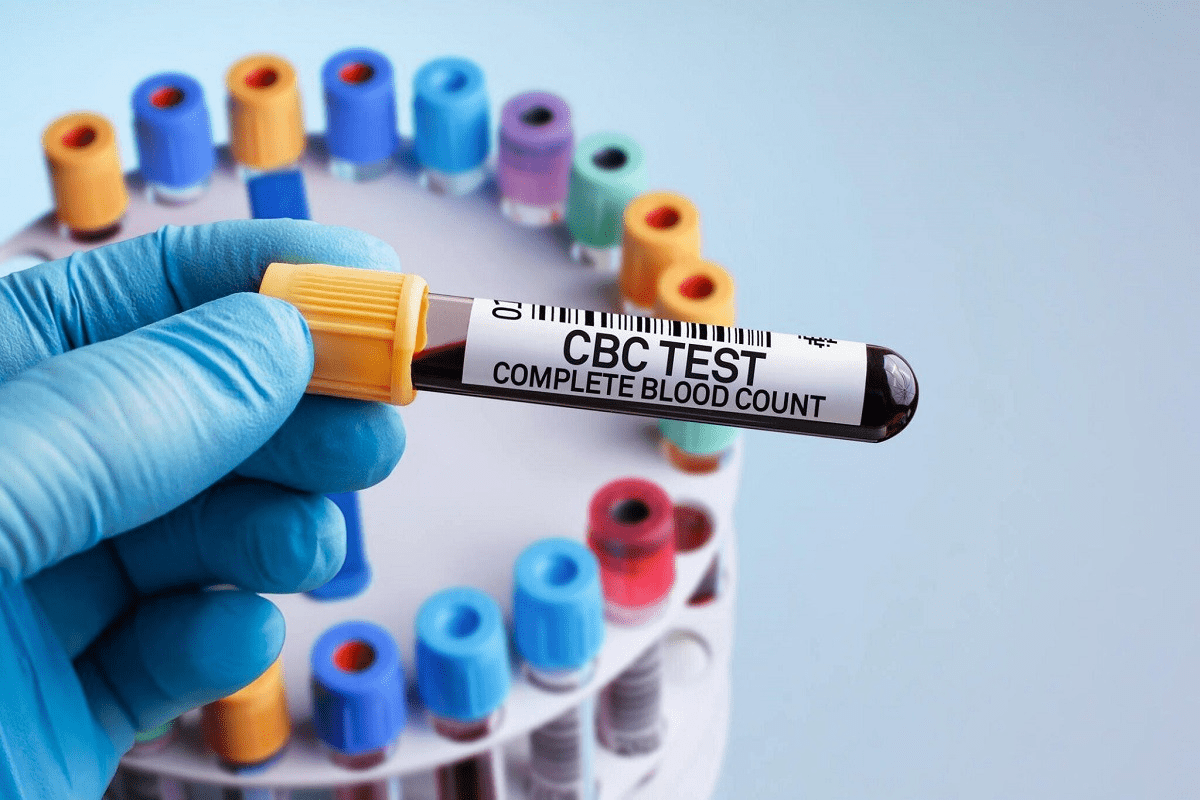Last Updated on November 26, 2025 by Bilal Hasdemir

Did you know that over 50% of cancer patients receive radiation therapy as part of their treatment plan? This shows how important radiation therapy is in cancer care. It’s a key treatment that targets cancer cells without harming healthy tissue too much.
Knowing which cancers work best with radiation therapy is key for good treatment plans. Healthcare providers can make treatment plans better by knowing which cancers respond well. This helps improve how well patients do.
Key Takeaways
- Cancer patients often receive radiation therapy as part of their treatment.
- Radiation therapy is a targeted treatment for various cancer types.
- Understanding cancer response to radiation is vital for effective treatment.
- Treatment plans can be tailored based on cancer type and response.
- Effective radiation therapy can improve patient outcomes.
The Science and Purpose of Radiation Therapy
Radiation therapy plays a crucial role in cancer treatment by damaging cancer cell DNA and preventing their growth. This treatment helps manage cancer in many ways, aiming to cure or ease symptoms.
How Radiation Damages Cancer Cell DNA
Radiation therapy uses high-energy particles to harm cancer cells’ DNA. This damage can kill cells or stop them from dividing. There are two ways this damage happens: directly and indirectly.
Direct damage happens when radiation hits DNA straight on. Indirect damage comes from radiation ionizing water in cells, creating free radicals that harm DNA. The goal is to hit cancer cells hard while protecting healthy ones.
New radiotherapy methods have made treatment more precise. This reduces side effects and improves results.
Curative vs. Palliative Radiation Goals
Radiation therapy has different goals. Curative radiotherapy aims to get rid of cancer completely. On the other hand, palliative radiotherapy focuses on easing symptoms and improving life quality for those with advanced cancer.
- Curative radiotherapy is for localized tumors or early-stage cancers.
- Palliative radiotherapy helps with pain, reduces tumor size, and manages symptoms.
Knowing how radiation therapy works is vital for both patients and doctors. It’s shown to be very effective in treating some cancers by damaging their DNA. This makes it a critical part of cancer treatment.
Types of Radiation Delivery Methods
There are many ways to deliver radiation therapy, each with its own benefits and uses.
The choice of method depends on the cancer type and stage, and the patient’s health.
External Beam Radiation Therapy
External Beam Radiation Therapy (EBRT) is a non-invasive treatment. A machine outside the body sends radiation beams to the tumor.
EBRT is highly versatile and can treat many cancers, like those in the brain, breast, and prostate.
Internal Radiation Therapy (Brachytherapy)
Brachytherapy places a radioactive material inside or near the tumor.
This method delivers high doses of radiation locally, protecting healthy tissues nearby.
Systemic Radiation Therapy
Systemic radiation therapy uses radioactive substances that travel through the bloodstream. They target cancer cells all over the body.
This approach is great for treating cancers that have spread or might spread to many areas.
Advanced Techniques in Radiotherapy Radiation Oncology

Advanced radiotherapy techniques like IMRT, IGRT, and SBRT have changed radiation oncology. They make radiation therapy more precise and effective. This leads to better results for patients.
Intensity-Modulated Radiation Therapy (IMRT)
IMRT is a complex form of radiation therapy. It changes the intensity of the radiation beam. This method delivers precise doses to tumors while protecting healthy tissues.
Studies show IMRT improves control over tumors and lowers side effects in different cancers.
Image-Guided Radiation Therapy (IGRT)
IGRT uses imaging to guide radiation therapy. It ensures radiation targets the tumor accurately, even when it moves. IGRT boosts radiation therapy’s precision, lowering the risk of complications.
Stereotactic Body Radiation Therapy (SBRT)
SBRT gives precise, high doses of radiation in a few sessions. It’s great for treating small, well-defined tumors. SBRT has shown high success rates with few side effects in early-stage lung cancer and other cancers.
| Therapy Type | Description | Benefits |
| IMRT | Modulates radiation intensity to target tumors precisely | Improved local control, reduced toxicity |
| IGRT | Uses imaging to guide radiation delivery | Enhanced precision, reduced complications |
| SBRT | Delivers high doses of radiation in a few fractions | High local control rates, minimal side effects |
Using these advanced techniques in treatment has greatly improved cancer care. They have raised the bar for patient outcomes and quality of life.
Highly Radio-Sensitive Cancers

Some cancers respond well to radiation therapy, leading to better treatment results. These cancers can be managed with radiation, which improves patient outcomes.
Hodgkin and Non-Hodgkin Lymphomas
Lymphomas are cancers of the lymphatic system. They are mainly divided into Hodgkin lymphoma (HL) and non-Hodgkin lymphoma (NHL). Both types respond well to radiation therapy.
Hodgkin lymphoma has a high cure rate with radiation, often paired with chemotherapy. This combination is key to treating HL.
Non-Hodgkin lymphoma also benefits from radiation. It’s used in early-stage disease and for symptom relief in advanced cases. Radiation plays a vital role in treating NHL.
Seminoma Testicular Cancer
Seminoma is a type of testicular cancer that responds well to radiation. Radiation therapy is a standard treatment for seminoma, often after orchiectomy. It helps control microscopic disease in lymph nodes, lowering recurrence risk.
- High cure rates with radiation therapy
- Effective in treating microscopic disease
- Often used post-orchiectomy
Skin Cancers: Basal and Squamous Cell Carcinomas
Basal cell carcinoma (BCC) and squamous cell carcinoma (SCC) are common skin cancers. Both are highly responsive to radiation therapy, making it a good option when surgery is not possible or would cause significant harm.
Radiation therapy for BCC and SCC offers high local control rates. It also helps preserve the skin’s appearance. This makes it a preferred choice for treating these cancers, even in sensitive areas like the face.
- Effective for BCC and SCC
- Preserves cosmetic appearance
- Preferred for sensitive areas
Head and Neck Cancers: Optimal Radiation Candidates
Managing head and neck cancers often includes radiation therapy. It’s very effective for some types. Studies show radiation therapy is key, mainly when saving organs is important.
Laryngeal and Hypopharyngeal Cancers
Laryngeal and hypopharyngeal cancers often get treated with radiation. The goal is to keep the larynx working. This helps patients speak and swallow.
Radiation therapy can be the main treatment or used with surgery and chemotherapy. The treatment plan depends on the cancer’s stage, location, and the patient’s health.
HPV-Positive Oropharyngeal Cancer
HPV-positive oropharyngeal cancer has a better outlook than HPV-negative ones. Radiation therapy is a big part of treating it. It’s often paired with chemotherapy.
Nasopharyngeal Cancer Treatment Paradigms
Nasopharyngeal cancer often gets radiation therapy too. The nasopharynx’s sensitive spot makes intensity-modulated radiation therapy (IMRT) essential. It aims to hit the tumor hard while protecting nearby tissues.
| Cancer Type | Primary Treatment | Role of Radiation Therapy |
| Laryngeal Cancer | Radiation Therapy or Surgery | Preserve larynx function, can be used alone or with chemotherapy |
| Hypopharyngeal Cancer | Surgery and Radiation Therapy | Often used post-operatively to reduce recurrence risk |
| HPV-Positive Oropharyngeal Cancer | Radiation Therapy and Chemotherapy | Key component of treatment, potentially curative |
| Nasopharyngeal Cancer | Radiation Therapy | Primary treatment, often using IMRT for precision |
Breast Cancer Radiation Therapy Outcomes
Radiation therapy is key in fighting breast cancer, mainly in early stages. It works in many ways, using different methods for each patient.
Studies show that radiation after lumpectomy cuts down recurrence risk in early-stage breast cancer. The American Cancer Society notes that this method can match mastectomy results, but keeps the breast.
Early-Stage Breast Cancer After Lumpectomy
For early-stage breast cancer patients who have had lumpectomy, radiation is often needed. It helps get rid of any cancer cells left in the breast. This combo, known as breast-conserving therapy, is a common treatment.
Benefits of radiation therapy after lumpectomy include:
- Reduced risk of local recurrence
- Improved overall survival rates
- Preservation of the breast
Post-Mastectomy Radiation Indications
Even with mastectomy, sometimes radiation is needed after. This is called post-mastectomy radiation therapy (PMRT). It’s usually for bigger tumors, cancer in lymph nodes, or when cancer is near or on the chest wall.
When to use PMRT depends on:
- Tumor size and stage
- Lymph node involvement
- Margin status
Partial Breast Irradiation Techniques
Partial breast irradiation (PBI) targets the area around the lumpectomy site, not the whole breast. It uses brachytherapy and external beam radiation therapy.
| Technique | Description | Advantages |
| Brachytherapy | Internal radiation delivered directly to the tumor site | Shorter treatment duration, reduced exposure to surrounding tissues |
| External Beam Radiation Therapy | External radiation focused on the tumor site | Non-invasive, can be tailored to the individual’s anatomy |
Prostate Cancer: Radiation as Primary Treatment
Radiation therapy is a top choice for treating prostate cancer. It works as well as surgery for many patients. It’s great for those who can’t have surgery or prefer not to.
Risk-Based Approaches to Prostate Cancer Radiation
Radiation therapy depends on the cancer’s risk level. For low-risk prostate cancer, it’s a good choice to avoid surgery’s side effects. Active surveillance is also an option, but radiation therapy is more active and effective.
For intermediate-risk patients, doctors consider health and tumor details. High-risk prostate cancer patients might need more aggressive treatment, like radiation and hormone therapy together.
Brachytherapy vs. External Beam Radiation Therapy
There are two main types of radiation therapy for prostate cancer: brachytherapy and external beam radiation therapy (EBRT). Brachytherapy uses radioactive seeds in the prostate for local radiation. EBRT sends radiation from outside the body.
EBRT has improved with Intensity-Modulated Radiation Therapy (IMRT). This makes it more precise and reduces side effects.
| Treatment Aspect | Brachytherapy | External Beam Radiation Therapy |
| Method of Delivery | Radioactive seeds implanted in the prostate | Radiation delivered from outside the body |
| Treatment Duration | One-time procedure | Multiple sessions over several weeks |
| Side Effects | Generally fewer urinary side effects | May have more urinary and bowel side effects |
Comparing Outcomes with Surgical Approaches
Research shows radiation therapy works as well as surgery for many prostate cancer patients. The choice between radiation and surgery depends on health, cancer details, and personal preference.
Radiation therapy keeps the prostate intact. This might lower the risk of surgery’s side effects like incontinence and impotence. But, it can also have its own side effects.
Lung Cancer Radiation Strategies
Lung cancer radiation strategies have become more advanced, leading to better patient outcomes. Radiation therapy is a key part of lung cancer treatment. It offers different approaches based on the disease type and stage.
Early-Stage Non-Small Cell Lung Cancer
For early-stage non-small cell lung cancer (NSCLC), radiation therapy is very effective. Stereotactic Body Radiation Therapy (SBRT) stands out for its precision. It delivers high doses of radiation to tumors while protecting healthy tissue.
Research shows SBRT can control tumors well in early-stage NSCLC. This makes it a good option for some patients instead of surgery.
Small Cell Lung Cancer Response Rates
Small cell lung cancer (SCLC) grows fast and is aggressive. While chemotherapy works well, radiation therapy is also key, mainly for limited-stage SCLC. Concurrent chemoradiation helps by treating the tumor and any hidden cancer cells.
SBRT for Medically Inoperable Patients
SBRT is a great option for patients who can’t have surgery. It’s precise and can give high doses of radiation. This makes it effective for early-stage NSCLC in these patients.
Studies support using SBRT to improve control and survival in these patients. The progress in lung cancer radiation, including SBRT, shows how treatment is evolving. As technology gets better, radiation therapy’s role in lung cancer treatment will likely grow.
Gynecologic Malignancies and Radiation Effectiveness
Radiation therapy is very effective in treating gynecologic malignancies, like cervical cancer. These cancers affect the female reproductive system. Radiation therapy helps cure and relieve symptoms.
Cervical Cancer: A Radiation Success Story
Cervical cancer is a big success story for radiation therapy. The American Cancer Society says it works well alone or with other treatments. New radiation methods like IMRT and brachytherapy have made treatment better and less harsh.
“Radiation therapy has been a game-changer in the treatment of cervical cancer, improving cure rates and quality of life.”
Endometrial Cancer Adjuvant Therapy
In endometrial cancer, radiation is used after surgery to kill any cancer left behind. This lowers the chance of cancer coming back and helps patients live longer. Doctors decide based on the cancer’s stage, grade, and the patient’s health.
| Cancer Type | Role of Radiation Therapy | Benefits |
| Cervical Cancer | Primary treatment, often with chemotherapy | High cure rates, improved survival |
| Endometrial Cancer | Adjuvant therapy post-surgery | Reduced recurrence, improved survival |
| Vulvar and Vaginal Cancer | Used in various stages, sometimes with surgery or chemotherapy | Local control, symptom palliation |
Vulvar and Vaginal Cancer Management
Radiation therapy is key in managing vulvar and vaginal cancers. It’s used with surgery and chemotherapy to control the disease and ease symptoms. This improves patients’ quality of life.
Radiation therapy keeps getting better, giving hope to those with gynecologic malignancies. As technology advances, radiation therapy will help manage these cancers even better.
Gastrointestinal Cancers and Radiation Approaches
Radiation therapy is key in treating many gastrointestinal cancers. These cancers affect different parts of the digestive system, like the rectum, anus, pancreas, and esophagus. Using radiation therapy has shown great promise in improving treatment results.
Rectal Cancer Neoadjuvant Therapy
Neoadjuvant radiation therapy is a common treatment for rectal cancer. It involves giving radiation before surgery to shrink the tumor. This can make surgery more effective and may even improve survival rates.
Anal Cancer Treatment Paradigms
Radiation therapy is a mainstay in treating anal cancer, often paired with chemotherapy. This combo has proven very effective, with many patients seeing complete remission. It helps keep the anal sphincter intact, avoiding the need for a colostomy in most cases.
Pancreatic and Esophageal Cancer Applications
Radiation therapy also helps manage pancreatic and esophageal cancers. For pancreatic cancer, it can ease symptoms and improve life quality, though its survival benefits are being studied. In esophageal cancer, it’s used with chemotherapy and surgery to better treatment outcomes.
The use of radiation therapy in gastrointestinal cancers shows how cancer treatment is evolving. As technology improves and treatment plans get better, radiation therapy’s role will likely grow. This offers new hope for patients with these tough diseases.
Brain and Central Nervous System Tumors
Advances in radiation therapy have improved outcomes for patients with brain and central nervous system tumors. Radiation therapy is a key treatment for these complex conditions. It offers various approaches tailored to the specific type and location of the tumor.
Primary Malignant Gliomas
Primary malignant gliomas are aggressive brain tumors that need prompt and effective treatment. Radiation therapy is a cornerstone in managing these tumors. It is often used with surgery and chemotherapy to control the tumor while protecting the brain.
Intensity-modulated radiation therapy (IMRT) and stereotactic radiosurgery (SRS) are advanced techniques for treating these tumors. These methods allow for precise radiation delivery, improving treatment outcomes.
Brain Metastases Management
Brain metastases are a common complication of various cancers, including lung, breast, and melanoma. Radiation therapy is vital in managing these metastases. Options range from whole-brain radiation therapy (WBRT) to SRS.
The choice of radiation technique depends on the metastases’ number, size, and location, as well as the patient’s condition. SRS is effective for patients with limited metastases. It offers high precision and spares normal brain tissue.
| Treatment Approach | Indications | Benefits |
| Whole-Brain Radiation Therapy (WBRT) | Multiple brain metastases, diffuse disease | Treats entire brain, addressing microscopic disease |
| Stereotactic Radiosurgery (SRS) | Limited number of brain metastases, oligometastatic disease | High precision, minimal damage to surrounding brain tissue |
Stereotactic Radiosurgery Applications
Stereotactic radiosurgery (SRS) is a highly effective treatment for certain brain tumors and metastases. It delivers a high dose of radiation precisely to the tumor, minimizing exposure to surrounding healthy tissue.
SRS is used for various indications, including brain metastases, acoustic neuromas, and certain benign tumors. Its precision and efficacy make it a valuable treatment option for patients with these conditions.
The use of SRS has been supported by clinical evidence, showing high local control rates and minimal toxicity. It is an important tool in the armamentarium of radiation oncologists treating brain and central nervous system tumors.
Pediatric Cancers and Special Considerations
Treating pediatric cancers is a careful dance. It aims to kill cancer cells while keeping healthy tissue safe. Radiation therapy is key, as it precisely targets tumors without harming too much.
Medulloblastoma and CNS Tumors
Medulloblastoma is a common brain tumor in kids. It often needs radiation therapy. CNS tumors, like medulloblastoma, are tough to treat because of their location and the child’s developing brain.
Radiation oncologists use advanced methods like craniospinal irradiation to fight these tumors effectively.
Treating CNS tumors requires careful planning. This is to protect the brain tissue around the tumor. Techniques like IMRT and proton therapy help achieve this goal.
Wilms Tumor and Neuroblastoma
Wilms tumor, a kidney cancer in kids, might need radiation therapy in some cases. Neuroblastoma, a cancer of nerve cells, also might get radiation therapy.
The radiation plan is made for each child. It considers the tumor’s size and the child’s health.
Long-term Effects and Mitigation Strategies
One big worry with radiation in kids is long-term side effects. These can include growth issues, brain problems, and higher cancer risk. To lessen these risks, radiation oncologists use lower doses and advanced techniques.
They also watch the child closely after treatment. This helps manage any late effects. Long-term care is key for kids who’ve had radiation therapy.
Conclusion: The Evolving Landscape of Radiation Therapy
Advances in radiation therapy are making a big difference for cancer patients. Researchers are working hard to make it even better. New ways to deliver radiation are being developed to hit cancer cells more precisely.
This new approach to radiation therapy is showing great promise. It’s being used to treat many types of cancer, like those in the head and neck, breast, prostate, and lungs. Techniques like Intensity-Modulated Radiation Therapy (IMRT) and Stereotactic Body Radiation Therapy (SBRT) are key parts of cancer treatment now.
Radiation therapy will keep playing a big role in fighting cancer as treatments evolve. More research and new methods will lead to better treatments. This will help patients live better lives. The National Cancer Institute’s work on improving radiation therapy shows its critical role in cancer treatment.
FAQ
What is radiation therapy?
Radiation therapy is a treatment for cancer. It uses high-energy particles or waves to kill or damage cancer cells.
How does radiation therapy damage cancer cell DNA?
It damages DNA in cancer cells. This makes it hard for the cells to divide and grow.
What are the different types of radiation delivery methods?
There are several ways to deliver radiation therapy. These include external beam, brachytherapy, and systemic radiation therapy.
What is Intensity-Modulated Radiation Therapy (IMRT)?
IMRT is a precise technique. It targets tumors with beams of varying intensities.
Which cancers are highly responsive to radiation therapy?
Some cancers respond well to radiation therapy. These include lymphomas, testicular cancer, and certain skin cancers.
Can radiation therapy be used to treat head and neck cancers?
Yes, it’s often used for head and neck cancers. This includes cancers of the larynx, hypopharynx, and oropharynx.
What is the role of radiation therapy in treating breast cancer?
It’s used after lumpectomy to kill remaining cancer cells. It may also be used after mastectomy in some cases.
Is radiation therapy a primary treatment for prostate cancer?
Yes, it’s a main treatment for prostate cancer. It can be used alone or with other treatments.
Can radiation therapy be used to treat lung cancer?
Yes, it’s used for lung cancer. This includes early-stage non-small cell lung cancer and small cell lung cancer.
What is Stereotactic Body Radiation Therapy (SBRT)?
SBRT delivers high doses of radiation to small tumors. It’s done in a few fractions.
Can radiation therapy cause long-term effects in pediatric cancer patients?
Yes, it can cause long-term effects in kids. This includes growth problems and an increased risk of secondary cancers.
What are the benefits of Image-Guided Radiation Therapy (IGRT)?
IGRT targets tumors precisely. This reduces damage to healthy tissues.
Can radiation therapy be used to treat brain and central nervous system tumors?
Yes, it’s used for brain and central nervous system tumors. This includes primary malignant gliomas and brain metastases.
What is the role of radiation therapy in treating gynecologic malignancies?
It’s used for gynecologic malignancies. This includes cervical, endometrial, and vaginal cancers.
Can radiation therapy be used to treat gastrointestinal cancers?
Yes, it’s used for gastrointestinal cancers. This includes rectal, anal, and pancreatic cancers.
References
- Gunther, J. R., Buchsbaum, J. C., & Desotelle, J. E. (2022). Decade-long disease, secondary malignancy, and brainstem injury outcomes in pediatric and young adult medulloblastoma patients treated with proton radiotherapy. Neuro-Oncology, 24(8), 1214-1224. https://doi.org/10.1093/neuonc/noac060
- Tyldesley, S., Bezjak, A., Ward, J., et al. (2024). Stereotactic vs Hypofractionated Radiotherapy for Inoperable Stage I Non“Small Cell Lung Cancer: The LUSTRE Phase 3 Randomized Clinical Trial. JAMA Oncology. Advance online publication. https://doi.org/10.1001/jamaoncol.2024.xxxx






